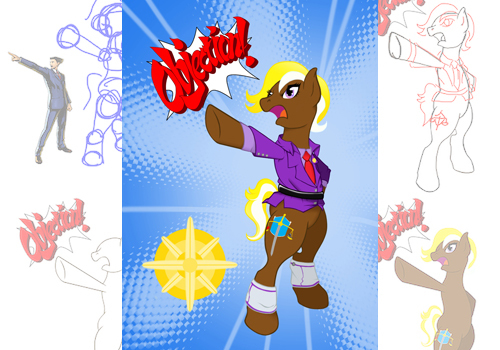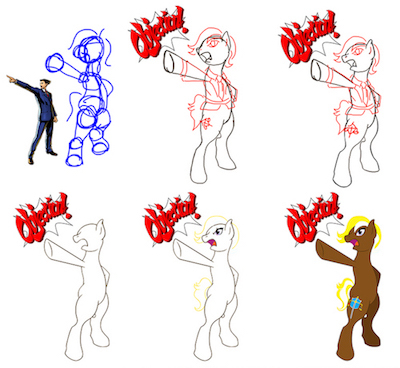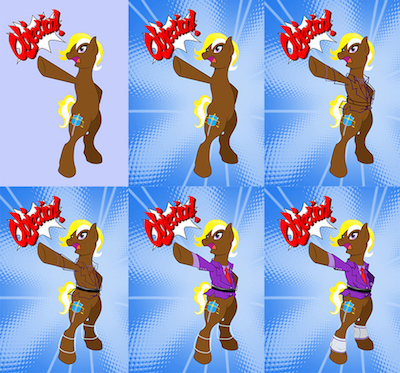3 Important Things to Know When Writing a Graphic Novel

We’re getting ready for Camp NaNoWriMo this April! This month, we’re talking to Wrimos who are using the Camp format to work on non-novel projects. Today, participant Dawn Eastpoint shares some of the most important things to keep in mind when tackling a graphic novel:
Graphic novel: the union of the written word and sequential art. A medium that has recently come into mainstream appreciation, inspiring Creatives young and old.
There are three things I suggest you remember when you choose to create a graphic novel:
1. Page real estate is expensive.The number of words needed is a fraction of what’s in a novel or a script, but that lack of written communication needs to be compensated with clear, visual scenes to tell the story.
When do you show, and when do you tell? Too much of one or the other will result in a muddled sequence that frustrates your readers. Your graphic novel is 100% still-motion entertainment, so don’t bog it down with blocks of words or unnecessary pictures that mess with the pacing.
If your script or story says, “a tear runs down her cheek as sorrow overwhelms her,” don’t paste that word wall in as exposition. Show it happening. If your reader can see it then there’s no need to clutter the scene with narration.
Whether your chapter is 10 pages or 40 pages long, each one must count. In this limited space you have to convince your audience to love your world and your characters. You have to spin a tale of development, twists, subtext, and history with as few words and panels as possible.
 2. Don’t overthink it.
2. Don’t overthink it.Grab a piece of paper, a sticky note, open a new document in your preferred word program, or use a crayon on whatever happens to be nearby.
Start writing.
Then do the same thing when you’re ready to draw. Take a marker to cardboard if that’s what works. And it doesn’t matter if you write or draw first, or do both simultaneously.
Don’t worry about details yet. Don’t know what anyone looks like? That’s cool. The dialogue isn’t developed yet? That’s cool, too. Can’t figure out what the bad guy is up to because there’s no backstory? It can wait.
This is why the next part is important.
 3. Stick figures and blobs are your friends.
3. Stick figures and blobs are your friends.Visual storytelling–whether a 4-panel strip, an animated movie, or a graphic novel–starts with the “roughs.” They stay the focus for 80% of the work’s creation process.
Roughs are what they sound like: they’re the unrefined drawings that more often than not look like crap. Love your roughs, they are as important as the final product.
This stage is the easiest phase to see what works and what doesn’t, and the least amount of work to change or do multiple versions of. This process of creating and refining is called pre-production in most fields. Note the “pre.”
Properly executed pre-production work equals fast and smooth production right into final production with minimal changes. That means major savings in time, money, and sanity. Mostly sanity.
Do as many rounds of pre-productions as you need until the pages tell your story. Use your stick figures and blobs until you find the composition that works, the expressions that fit, the dialogue that says what needs to be said and still manages to work with the panels. Add pages, subtract them, add scenes and subtract them.
Save your sanity and do it all with stick figures and blobs. Add more details once you’re sure of a panel. Clean lines can wait. Color/shading/highlights can definitely wait.
You know what? There’s one more important thing:
4. Nothing is perfect!You have a deadline. Get it done and move on. You’ll love your work in the end.

Dawn Eastpoint is an illustrator, animator, Jack-of-All-Arts, writer, and avid lover of manga, anime, and cute things. She’s also mother to a rescue turtle, a yellow-eared slider named Gimli because he’s short, round, and can’t jump. She suffers from several medical conditions but doesn’t let them stop her from creating! Her muse won’t shut up and leave her alone, anyway. Dawn can be bribed with Starbucks, baby animals, and food things. You can visit her Patreon, DeviantArt, and Archive of Our Own pages.
Chris Baty's Blog
- Chris Baty's profile
- 63 followers



